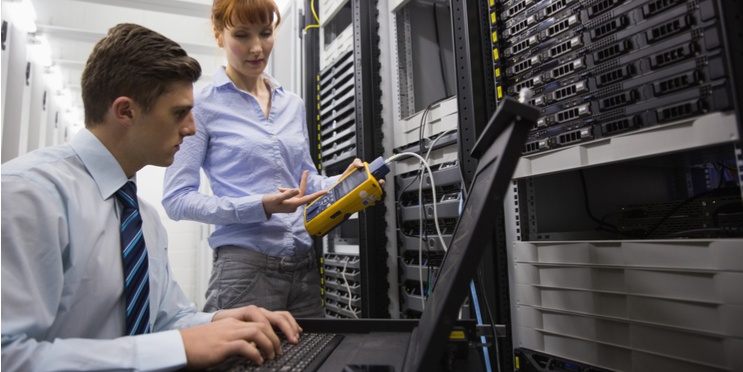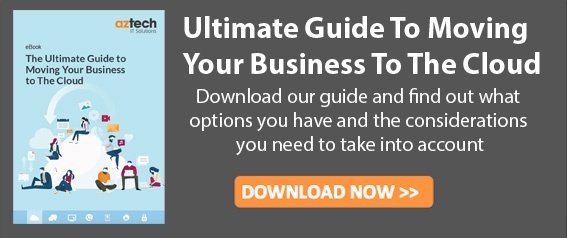Are you looking for ways to improve the efficiency and cost-effectiveness of your business's IT infrastructure?
If so, it may be time to consider transitioning your technology systems over to cloud computing.
Cloud based solutions are becoming an increasingly popular for many companies today, but what does it mean and how is it different from traditional computing?
In this blog post, we will explore the contrasting features of cloud computing vs traditional IT infrastructure, including their architectural differences, storage and application flexibility, scalability options, and more.
By delving into these aspects, you will gain the necessary insights to make an informed decision on whether transitioning to the cloud is the right move for your business.
What is Traditional Computing?
In simple terms, traditional computing refers to the use of electronic devices such as desktop and laptop computers, that use a central processing unit (CPU) to execute instructions stored in memory.
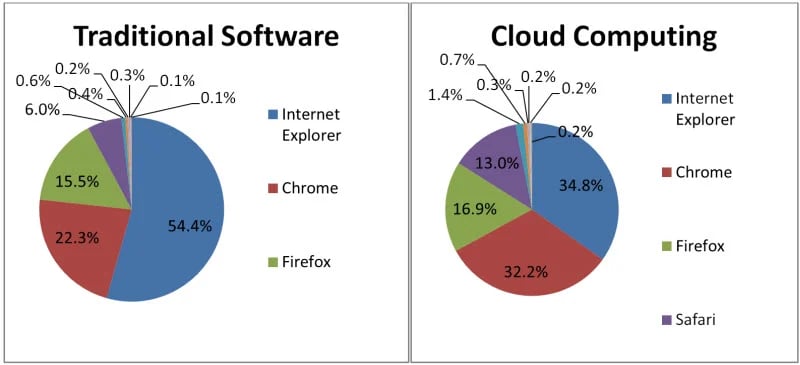 Source: Marketing Experiment
Source: Marketing Experiment
This form of computing is based on the Von Neumann architecture, which was introduced in the 1940s and is still widely used today.
Traditional computing IT infrastructure relies on software programs that are installed onto a device in order to perform specific tasks.
These devices can also rely on external storage devices, such as hard drives or USBs, for additional memory or to transfer files.
While traditional computing has been the norm for several decades, the rise of cloud based infrastructure and cloud migration has brought about a shift towards more flexible and versatile ways of computing.
Cloud Computing Pros
Here are the key advantages of cloud computing:
1. Cost Savings
Cloud computing can provide significant cost savings for businesses, as it eliminates the need to purchase and maintain expensive hardware and software.
Instead, companies can use cloud-based services on a pay-as-you-go basis, allowing them to scale their usage up or down depending on their needs.
In addition, cloud benefit businesses to reduce their upfront costs and ensure that they are only paying for the resources they actually need.
2. Increased Productivity
Cloud computing can also increase productivity by allowing employees to access data and applications from any location with an internet connection.
This means that employees can work from home or while travelling without having to worry about accessing the necessary files or programs.
Additionally, cloud computing allows teams to collaborate in real time, which can improve communication and speed up the completion of tasks.
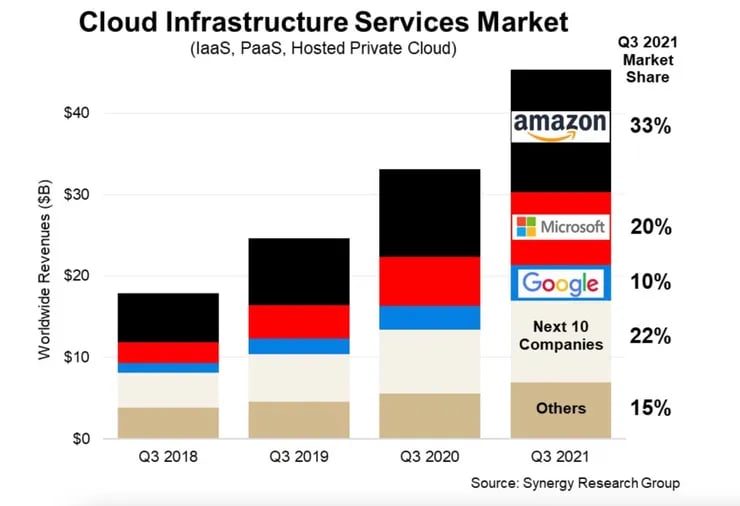 Source: Synergy Research Group
Source: Synergy Research Group3. Easier Software Updates
With cloud computing, software updates are handled automatically by the provider, so customers don’t have to worry about manually installing new versions of their applications or operating systems.
So, this not only saves time but also ensures that customers always have access to the latest features and bug fixes available for their applications.
Also, It helps customers stay compliant with industry regulations as they don’t have to worry about staying up to date with new versions of software that may be required for compliance purposes.
4. Increased Reliability
Cloud computing is also more reliable than traditional IT infrastructure as cloud providers typically employ redundant servers and other measures to ensure that customer data is always accessible when needed.
Additionally, most cloud providers offer Service Level Agreements (SLAs) which guarantee a certain level of uptime for customer applications and data so that businesses can plan accordingly if there are any outages or disruptions in service due to maintenance or other issues beyond their control.
5. Easy Scalability
Moreover, cloud computing offers seamless scalability, enabling businesses to effortlessly expand their resources such as storage space and processing power whenever necessary, without the need to invest in extra hardware or hire additional support staff.
This makes it easier for businesses to grow without having to worry about investing heavily in infrastructure upgrades each time they want to expand their operations or take on more customers/clients/projects etc.
Cloud Computing Cons
1. Security Issues
One of the biggest drawbacks of cloud computing is the potential for security issues.
Since data is stored on remote servers, it can be vulnerable to cyber-attacks or unauthorised access.
Additionally, if a company’s cloud service provider experiences a breach, all of their customers’ data could be compromised.
To mitigate these risks, companies must ensure that their cloud service provider has robust security measures in place.
2. Interruptions in Service
Another con of using cloud computing is that there may be interruptions in service due to outages or other technical issues.
If a company’s cloud service provider experiences an outage or other issue, they may not be able to access their data until the problem is resolved.
Additionally, if the internet connection between a company and its cloud service provider is unreliable, this could lead to frequent interruptions in service.
3. Lack of Control
Finally, another con of using cloud computing services is that companies do not have full control over their data and applications since they are hosted by a third-party provider.
This means that companies cannot customise their applications as much as they would like and may not always have access to the latest updates and features offered by the provider.
Traditional Computing Pros
Here are the advantages of traditional computing:
1. Reliability
One of the advantage of traditional computing is its reliability.
Traditional computers have been around for decades and are well understood by computer technicians and engineers, making them easy to repair and maintain if something goes wrong.
Additionally, traditional computers tend to have fewer compatibility issues than newer models since they use older hardware and software that is better supported by manufacturers and developers.
2. Performance
Traditional computing also offers superior performance compared to their more modern counterparts.
Traditional desktop PCs often come with more powerful processors, larger amounts of RAM, and higher-end graphics cards than laptops or tablets, which allows them to handle demanding tasks such as gaming or video editing with ease.
Additionally, traditional desktops can often be easily upgraded with additional components when needed in order to keep up with changing technology demands.
3. Customisability
Traditional desktops also offer more customisability than other types of computers due to their modular design.
For example, users can easily swap out components such as the processor or graphics card in order to upgrade their system's performance without having to purchase an entirely new computer.
This makes it easy for users to tailor their system's hardware configuration specifically to their needs without having to worry about compatibility issues that may arise from mixing different components together from different manufacturers.
4. Expansion Options
Traditional desktop PCs also offer more expansion options than other types of computers due to their larger size and greater internal space for additional components such as extra hard drives or optical drives.
This feature is particularly beneficial for users who require extra storage space or need specialised hardware, such as a Blu-ray drive, to enjoy high-definition movies on their computer system without the need to invest in a completely new machine solely for this purpose.
5. Ease Of Use
Lastly, traditional desktop PCs offer a user-friendly experience with their straightforward design and intuitive user interface.
Unlike laptops or tablets that rely on touch gestures to access certain features, traditional desktop PCs provide the convenience of physical buttons, making them easier to navigate and operate.
Traditional Computing Cons
Here are the disadvantages of traditional computing:
1. High Cost
Traditional computing is often more expensive than other forms of computing, such as cloud computing or edge computing.
This is because traditional computing requires the purchase of hardware, such as servers and storage systems, which can be costly to purchase and maintain.
Additionally, traditional computing also requires specialised software licenses, which can add to the cost.
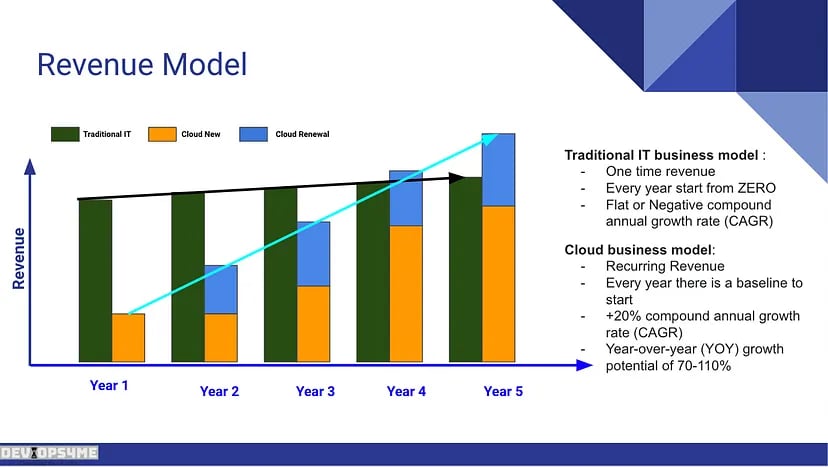
2. Complex Infrastructure
Setting up a traditional computing environment can be complex and time-consuming.
It requires setting up physical infrastructure, such as servers and storage systems, as well as networking equipment and software applications.
This process can take weeks or even months to complete depending on the size and complexity of the environment.
3. Limited Scalability
Traditional computing environments are not easily scalable, meaning that they cannot easily be expanded to meet increased demand or new requirements without significant effort.
For example, if additional capacity is needed in a traditional environment, it may require purchasing additional hardware or software licenses, which can be costly and time-consuming.
4. Security Risks
Traditional computing environments are vulnerable to security risks due to their lack of flexibility and scalability.
These environments are typically designed for specific tasks and do not have the ability to adapt quickly to changing threats or demands from users or customers.
Additionally, these environments are often difficult to monitor for suspicious activity due to their complexity and lack of visibility into user behaviour.
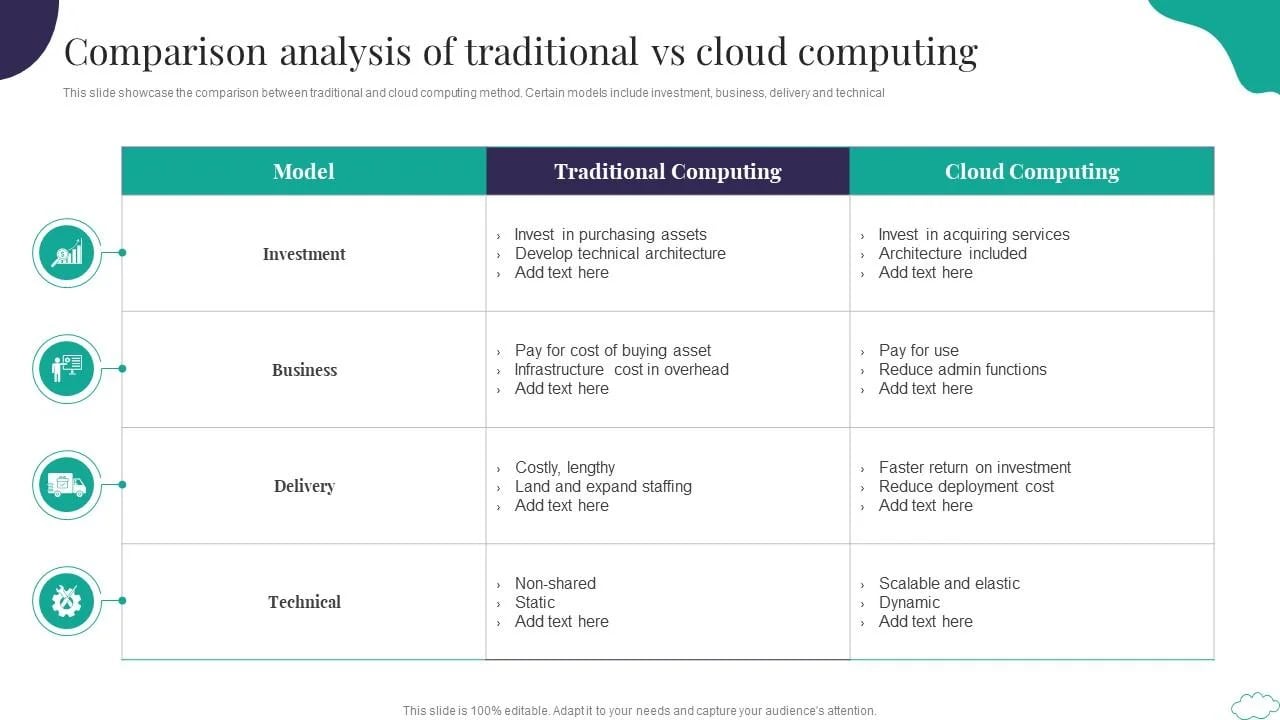 Source: Slide Team
Source: Slide TeamKey Differences of Cloud Computing vs Traditional
Here are the 5 major difference between cloud computing vs traditional computing:
1. Cost
One of the key differences between cloud computing vs traditional IT infrastructure is cost.
Cloud computing can be much more cost-effective than traditional computing because it eliminates the need to purchase, install, and maintain hardware and software.
Additionally, cloud providers typically charge users based on usage rather than a flat fee, which allows companies to pay only for the resources they use.
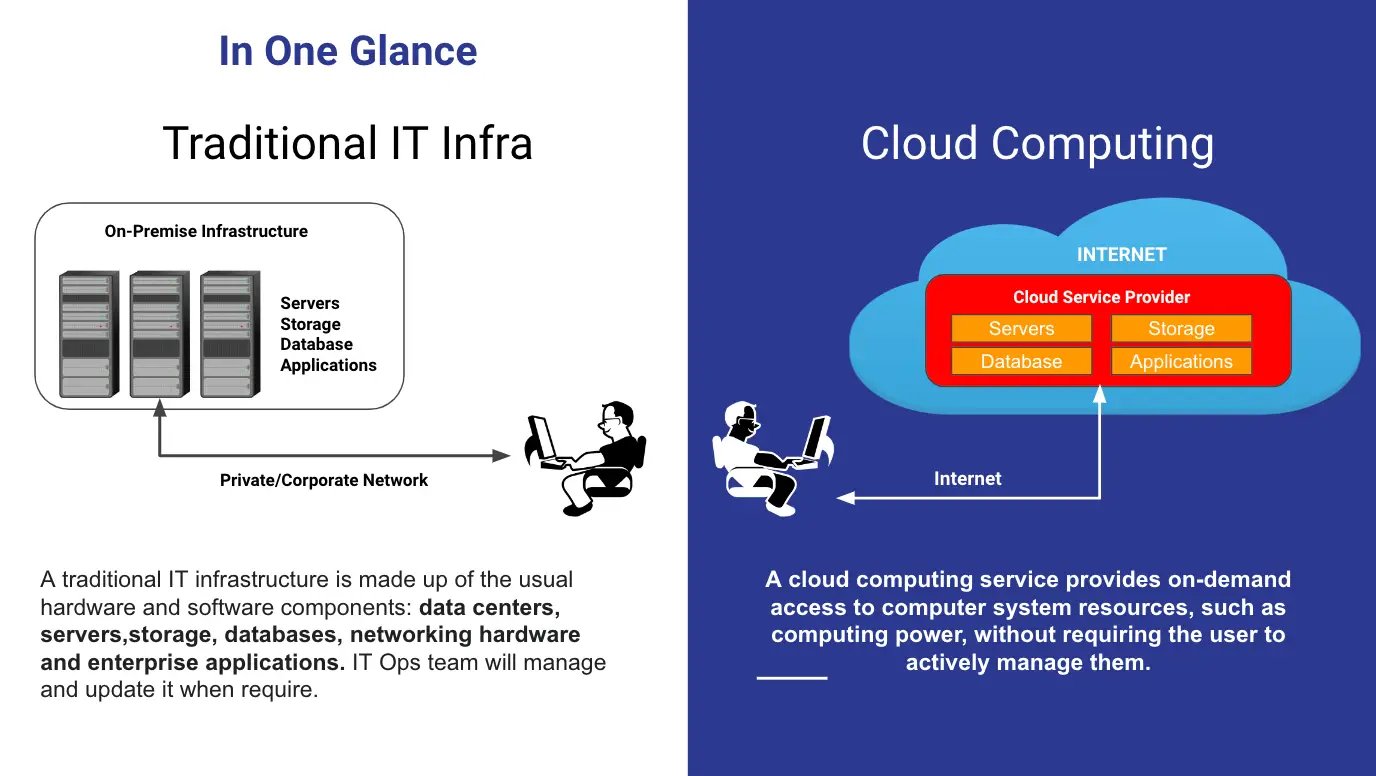
2. Scalability
Another difference of cloud computing vs traditional computing is scalability, as cloud computing offers greater scalability than the traditional IT infrastructure.
With traditional computing, companies must purchase additional hardware and software in order to increase their capacity or add new features.
With cloud computing, however, companies can quickly scale up or down as needed without having to make any large investments in hardware or software.
This makes it easier for companies to respond quickly to changing business needs.
3. Reliability
Another significant difference between cloud computing vs traditional computing is the aspect of reliability.
Cloud computing takes the lead in terms of reliability, thanks to its extensive network of data centres located worldwide.
These data centres are under constant surveillance and maintenance by skilled engineers, ensuring uninterrupted service.
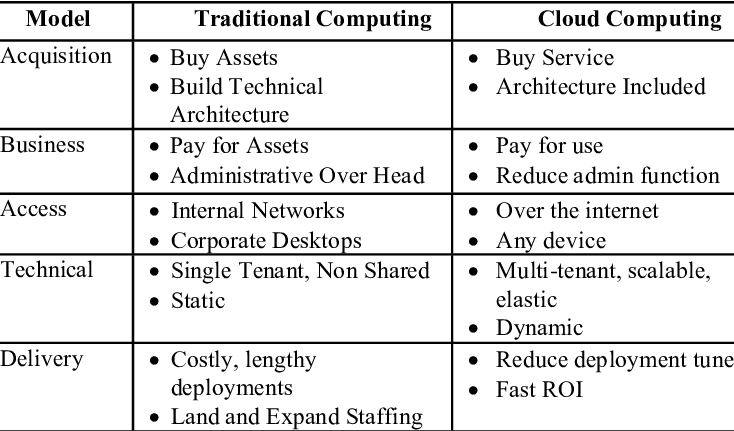 Source: Research Gate
Source: Research Gate
In contrast, traditional data centres are more vulnerable to disruptions, be it due to hardware failures or power outages, making them less reliable in comparison.
This ensures that if one data centre goes offline due to a technical issue, another one will be able to take over without any disruption in service.
Traditional servers, on the other hand, are much more vulnerable to outages due to unexpected hardware failures or power outages.
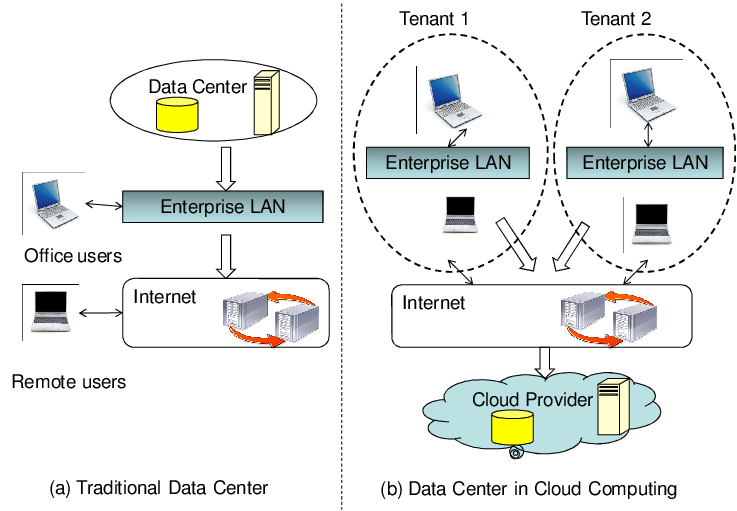 Source: Research Gate
Source: Research Gate4. Security
Another major difference between cloud computing vs traditional data centre is security.
The security of cloud-based systems is also superior to traditional systems because cloud providers employ state-of-the-art security measures such as encryption and identity management tools that protect user data from unauthorised access or theft.
Traditional systems are much more vulnerable to attack because they lack these advanced security measures and tend to rely on outdated methods of protection such as firewalls and antivirus software.
5. Flexibility
The final key difference between cloud computing vs traditional is flexibility.
Cloud computing provides users with unparalleled flexibility as it enables them to effortlessly access their applications from any device, anywhere in the world, at any time, without the need for any prior installations on their devices.
This makes it easier for users to work remotely or collaborate with colleagues who may be located in different parts of the world without having to worry about compatibility issues or installation delays.
Which one is better: Cloud Computing or Traditional Computing
The world of computing is constantly changing, and there are always new technologies and approaches being developed.
One question that arises quite often is whether cloud computing vs traditional computing is better.
Both have their pros and cons, and the choice ultimately depends on what the user needs from the technology.
Traditional computing involves the use of physical hardware – the computer or server – and software installed on it. On the other hand, cloud computing utilises remote servers and the internet to provide users with access to software, storage, and processing power.
Cloud computing offers scalability, flexibility, and cost-effectiveness, whereas traditional computing provides more control and security.
Deciding which one is better, either cloud computing or traditional for your particular needs requires a thorough understanding of your requirements and priorities.

-1.png?width=552&height=678&name=text-image%20module%20desktop%20(4)-1.png)


.png?width=2000&name=Case%20study%20(21).png)


-2.png?width=422&height=591&name=text%20image%20tablet%20(31)-2.png)

-2.png?width=1366&height=768&name=Blog%20Hero%20Banners%20(4)-2.png)
-2.png?width=1366&height=768&name=Blog%20Hero%20Banners%20(5)-2.png)
